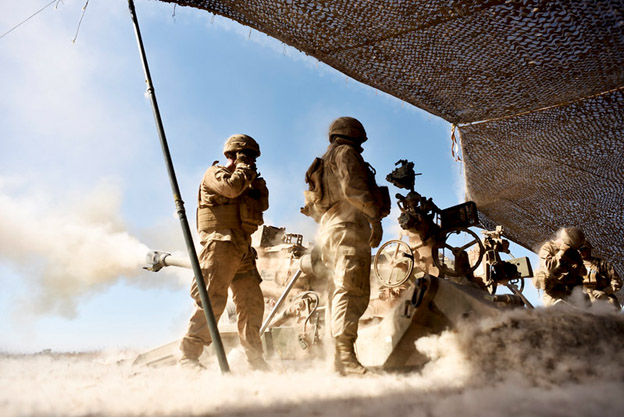Military personnel often operate in a high-risk environment for auditory system damage (hearing loss) due to regular exposure to both operational noise and blast weaponry, which has become the primary mechanism of combat injury. The auditory effects of acute blast exposure are well-documented and result in structural damage to both the ears (peripheral auditory system) and brain regions associated with hearing (central auditory system). Unsurprisingly, blast-related injuries are twice as likely to be associated with hearing loss relative to non-blast injuries.
A recent study addresses the issue of blast-related auditory damage by assessing the effectiveness of preventative equipment used by military personnel who sustained blast-related injuries.1 Helmets and earplugs are both commonly used protective equipment for military personnel. Using a chinchilla model of auditory blast exposure, the combination of both a helmet and ear plugs eliminated central auditory system damage, which was not observed when ears were protected using earplugs only. This is likely due to the helmet's ability to reflect and absorb the energy carried by blast waves and reduce the pressure directly applied on the brain, thereby providing a secondary level of protection against tissue damage in brain regions associated with hearing.
This study highlights the benefit of using a two-fold approach to manage blast-related auditory injury in military personnel. The combinational use of both ear and head protection is superior in preventing permanent hearing loss following blast exposure, as compared to the use of either piece of equipment alone. The serious nature of this issue, which has long-term health impacts, further highlights the importance of a multifaceted approach to preventing blast-related auditory injuries by implementing these protective measures to improve the overall well-being of active duty Service members and Veterans.

1. Jiang, Shangyuan et al. "Prevention of Blast-induced Auditory Injury Using 3D Printed Helmet and Hearing Protection Device - A Preliminary Study on Biomechanical Modeling and Animal." Military medicine vol. 186, Suppl 1 (2021): 537-545. doi:10.1093/milmed/usaa317
This study was supported by a grant from the U.S. Army Medical Research and Development Command (W81XWH-14-1-0228).
Your 15 minute session will timeout in approximately 10 minutes.
If you're in the middle of entering information, please close this warning and save your progress (if possible) or finish up your task.
If your session fully times out, you will lose any un-saved work.
Your current Blast Injury Research Program session has expired.
Your next click will take you away from the private area, and you will lose any work you have in-progress.
Please enter your email address, and try again.